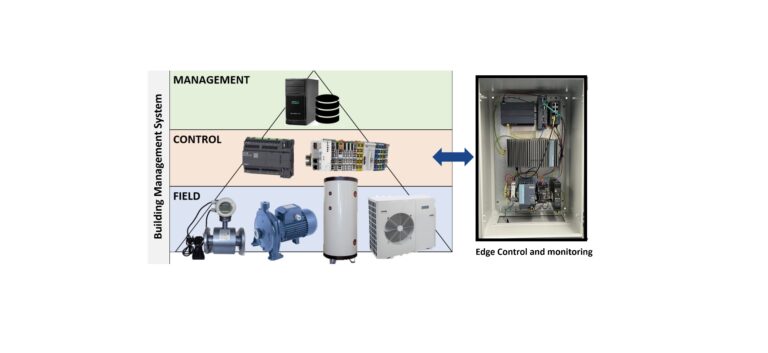Result description
HYPERGRYD will develop methods for edge-based distributed machine learning and control, which allows machine learning models and control systems to be distributed across multiple edge devices for joint modelling, control, and optimization. It is used in the operational phase.
Addressing target audiences and expressing needs
- Business plan development
- Expanding to more markets /finding new customers
- Collaboration
To bring this innovative proof of concept to market, we seek strategic partnerships with investors, industry leaders, and collaborators who share our vision for optimizing and decarbonizing energy use in buildings. Our edge-computing-based smart control panel enhances BMS capabilities, enabling AI-driven decision-making for heat pumps and thermal storage systems. With a successful pilot installation at KEZO’s live-in lab, we are now looking to scale and commercialize this solution. We invite stakeholders to join us in advancing intelligent energy management, unlocking new efficiencies, and driving sustainable building operations with AI-powered energy systems.
- Other Actors who can help us fulfil our market potential
- Research and Technology Organisations
- Private Investors
R&D, Technology and Innovation aspects
KTH objective for the first two years after project closing concerning ER13 (Edge IoT tool for the optimal operation of HPs within a local energy network) and unlocking the operation potential of complex energy systems. The objective within the two following years is to extend the test period of the product on the demo pilot KEZO for better performance evaluation. The company estimates that a small-scale deployment will take approximately two years, involving additional performance tests. For large-scale development, the timeline will depend on the first deployment in a real operational environment. Initially, it is essential to identify a company willing to host the technology and cover development, manufacturing, and marketing expenses. Direct engagement with end-users to propose or install the solution appears unfeasible without an associated company name. KTH’s product is currently installed and operational on KEZO’s demo site. The hardware part has been built (although it still needs to integrate some AI functionality and more data is needed to train the model). The edge panel can be connected to the project platform to forward data and visualization functions for public access. The platform can be adjusted to function as an interactive tool for the end-user, with the edge panel serving as an intermediary between the cloud services and the targeted HVAC system (to be investigated separately with IDP). As an additional feature, the platform allows for the forwarding of any indoor status data to the end-user via any smart device (e.g., mobile phone) and facilitates the sending of remote control commands to the HVAC system.
Since this solution is data-driven, replicating the advanced control and monitoring system for any HVAC unit will simply involve accessing, storing, and analyzing new datasets.
The sustainability of this proof of concept lies in its scalability, cost efficiency, and adaptability to evolving technologies. By leveraging AI-powered control, real-time data access, and seamless integration with industrial systems, it optimizes energy use, reduces operational costs, and supports predictive maintenance. Its data-driven approach ensures continuous improvement, while compliance with environmental regulations enhances long-term viability. Additionally, the potential for business models such as data-as-a-service (DaaS) and energy optimization consulting makes it financially sustainable in a rapidly evolving market.

